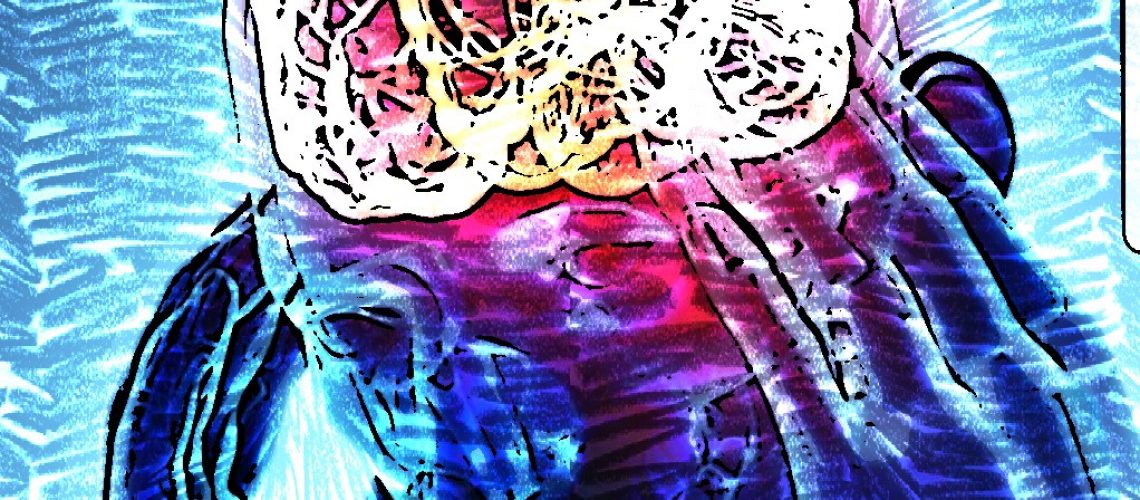Whistling is great Vagus based pain medicine
The first time I fully understood the connection between pain and the Vagus nerve was when I heard the following story: A nurse had a 6-year-old boy as her patient. She needed to do an injection but the boy was very afraid of needles. She asked the boy if he could whistle. Enthusiastically the boy replied that he has just learned. The nurse prepared the arm and asked the boy to show the longest lasting single whistling sound that he has ever done. When the boy started, the nurse simultaneously made the injection. The boy did not even flinch and continued his long whistling during the whole time. When she was done, the boy was very surprised and said that he did not feel the needle at all.
The boy did not feel the pain because:
1) The long whistling activated the Vagus Nerve through exhalation and neurological ‘safety’ pathways in the face. It drastically reduced his neurological reaction to pain.
2) The boy’s attention to the act of whistling (cognition) did the rest of the pain reduction work.
This has been known since ancient times. If we relax and activate the Vagus nerve with conscious breathing – we feel less pain. It is the worlds cheapest and easiest pain reduction medicine (but don’t expect any pharma company or pill peddling doctors to admit to it). It is not only a reduction of the ‘perception’ of pain. There is also real decrease of neurological activity in our pain pathways when the Vagus nerve is active. We should also harness the brains ‘simplicity’ and keep our attention elsewhere, to reduce our feeling of pain. This knowledge is used in martial arts and a lot of other practices – but unfortunately, we easily forget it in our everyday life.
Pain is our brains manifestation of stress.
Modern life is for most people quite ‘stressful’. We are keeping ourself busy and mentally stressed. This stress comes in many forms. Negative stress is the biggest fertilizer for our pain. When there is chronic stress, there is usually chronic pain.
The good news is that evolution has developed a natural defence system against harmful stress. This defence is the Vagus nerve which is the body’s main stress reducer on all battle fronts:
- It fights inflammatory stress with its Cholinergic Immune System.
- Blood pressure stress is adjusted with the baroreflex, vein muscle activity and pulse variability.
- Gut stress is improved with microbiome/hormone homeostasis adjustments.
- Cardiac stress is reduced with the cardiac/respiratory homeostasis.
- Mental stress is reduced by Vagus nerve activation since it enables brainwave coherence and a reduction of mind wandering
Headaches
So, let’s go into examples. One very common source of pain is headaches. We all know them and they often seem to be chronic at least in some way.
If scientist and doctors would not experience headaches themself, they would not believe when patients say that they have them. This is because the brain has no sensory nerves and consequently one cannot have normal pain-sensory ‘ache’ there. Headaches are therefore still a medical mystery. We know they are very useful in evolution and it is a cognition based ‘fire alarm’ type stress mechanism. To make it worse, scientifically speaking we don’t know anything about consciousness and how it works. Therefore, it is naturally very difficult to tackle headaches. Currently only empiricism and ‘trials and errors’ are successfully used in order to develop ‘modern’ solutions. Regardless of what pharma-companies try to brag – they fundamentally don’t have a clue why their headache pills work. They understand some of the chemical chain-reactions and the neuro-signalling changes but none of their highflying professor are any wiser about the ‘feeling of headache’ than anyone else.
An alcoholic friend of mine was better at explaining headache and how to fix it: If there are not enough alcohol molecules to anesthetize the gut and for spreading into the soup between neurons to anesthetize them – then he gets a headache. To cure the headache, he needs more alcohol. His ‘evolved’ inner system requires it. Imbalance (too little alcohol) is inner stress and headache for him.
The Vagus nerve is the ‘homeostasis’ (balance) nerve and main connection between the gut and the brain. The big pharma scientist does not know how to explain his invented ‘neurotransmitter deactivating molecules = headache pill’ connection to consciousness. The alcoholic at least knows from experience how alcohol molecules work on his consciousness. It is not wise to try fix a stress alarm signal (headache) without understanding the effect on consciousness or improving mental balance.
But if we discount alcohol as a medicine for headache, there are new and non-pharma methods being developed. The non-invasive Vagus stimulation device ‘Gammacore’ was four years ago FDA approved as medical treatment for cluster headaches. Cluster headaches are sometimes called suicide headaches because they are very debilitating. In the main clinical study, about 50% of the users got a clear benefit from it. That’s better than most medicines. The Vagus nerve and the Trigeminal nerve are intertwined and connected. The Trigeminal nerve is known to be the main culprit in migraine and a lot of chronic headaches. By stimulating the Vagus nerve on the neck, the trigeminal nerves misfiring’s seem to be reduced. This is fundamental science and addressing the cause better than any neurotransmitter medication. The field of Vagus- and neurostimulators to treat headaches is evolving quickly. My company, Vagus Health, is also developing a Vagus stimulation device which will start beta-trials next year. Vagal tone improvement is scientifically proved to be directly correlated with better cognition and attention. Therefore, Vagus stimulation is a method which can reduce both pain and improve the patient’s mental wellbeing.
For those with migraine but not interested in pills or tech, I warmly recommend trying ‘Vipassana mediation’. It is a Buddhist-based insight meditation practice which has helped people reduce their migraines worldwide (www.dhamma.org). I started doing Vipassana mediation ten years ago and I know that I always can get rid of my headaches by simply sitting down and meditating for 30 minutes. If I don’t have time, only then do I resort to pain relief pills.
Back pain
Another very usual source of pain is the back. I have had chronic back pain for more than 30 years. It has become my ‘companion’ and its severity varies due to my own physical activity or lack of ‘preventive’ practices. If I don’t do my morning yoga and Vipassana mediation, I know my back pain is worse in the evening. My third self-medication is swimming and water massage. If I do all of these three methods before noon, I will be fine. If not, then I often have pain and I maybe have to resort to a pain reliever in the afternoon. With this practice and by not visiting a back-specialist neurosurgeon, I have been able to stay away from the surgery-table. Friends of mine are already on their 5th of 10th back-surgery. I think it is a folly. These chronic back-surgery bi-annual ‘cash ins’ by private hospitals should be forbidden. Research has very clearly shown that these endless back-surgeries are useless in the majority of cases.
So why does yoga and mediation help? Stretching is a natural way to de-activate and improve localized inflammations. Meditation is a mental practice which calms cytokine release and hence inflammation in the area of chronic back pain. It is not really clear how it works but it has been shown to work in many scientific studies and I know it works for me.
The science
Chronic pain is often scientifically described with a term called sensitisation. The more pain signalling an area is doing, the stronger the neural pathways for it becomes. This neural amplification in the central- or autonomic nervous system is resulting in raised pain sensitivity. This sensitisation has four effects:
- It lowers the firing threshold of neurons
- It causes after-effects of pain to linger
- It makes impulses from surround tissue to seem noxious even if they are not.
- It further increases the neuronal connections for this pathway.
Chronic pain thereby becomes a type of neurological ‘learning disorder’ in which the brain misinterprets signals. It can become a self-strengthening negative spiral. Some describe it as classical conditioning like Pavlov’s dogs which learned to salivate in response to a bell. Chronic pain becomes a ‘bad habit’ for the brain and it is difficult to consciously break this negative loop.
IBS, Fibromyalgia, CFS and Migraine
Examples of nervous system sensitisation are found in diseases such as Irritable Bowel Syndrome (IBS), Fibromyalgia (global muscle pain), chronic fatigue and migraines. When the nerves initiate these faulty pain sensations, the body and the mind get stressed. If these stressors are strong enough and activate the immune system, it can launch an autoimmune reaction which leads to autoinflammation. This type of inflammation has no external ‘reasons’ for inflaming the area – they occur because there is excess cytokines in the effected area. One example is when feet are swelling even if the source of the pain is damage in the neck area.
This negative sensitization process is further strengthened by anxiety. If a person ‘fears’ a future potential pain, then attention and hence neural pathway sensitivity is raised and ‘voila’ – pain occurs. Having ‘chronic fight or flight = sympathetic nervous system’ as ON, is unfortunately an efficient way to become more sensitive to pain and hence increase the perception of pain
Low Grade Inflammations
Mental stress and chronic pain are known to be tightly linked to each other but the third very important component – low-grade inflammations – have not been addressed adequately by the medical- or scientific community. As I presented in my previous blog, anxiety or depression are usually caused by low grade inflammations in the brain or in the autonomic nervous system. https://vagus.co/anxiety-depression-and-the-vagus-nerve/
Normal pain relivers work mainly by reducing neurotransmission. Opioids are even worse because they effectively anesthetize nerves and therefore decrease the Vagus nerve’s ability to uphold homeostasis and proper immune response. Opioid treatment logic is a bit like the doctor who said ‘the surgery went great but the patient died’.
Measure the Vagus Nerve
By lowering inflammations and activating the Vagus nerve, I firmly believe that one can break the pain-sensitizations spiral and enable the body’s own homeostasis – via the Vagus nerve – to lower chronic pain.
The starting point for this process should always be adequate data to evaluate how one’s interventions are working. The cognitive perception of pain is rarely a reliable indicator of interventions true effects. We need to know how the intervention influences the root cause of the pain. Often also the conscious ‘feeling’ can be of increased pain when something is changing neural pathways for the better. The VAGUS® ECG test with Apple- and Vagus Watches was developed to determine this kind of vagal tone. With it one can monitor how well the Vagus nerve is able to work on homeostasis and immune response. If intervention raises vagal tone, then it will in most likely result in lowering the pain.
Activate the Vagus Nerve
There are many ways how to activate the Vagus nerve. The easiest are:
- controlled breathing (min 5 seconds inhale and 5 seconds exhale)
- splashing cold water on the face.
- Singing, humming or whistling
- Meditation or yoga
More are described in my blog here: https://vagus.co/10-ways-to-activate-the-vagus-nerve/
Have a great & pain-free day,
Gustaf
Ps: For those who want to read more, I warmly recommend the book ‘The Meaning of Pain’ by Nick Potter
© Gustaf Kranck

